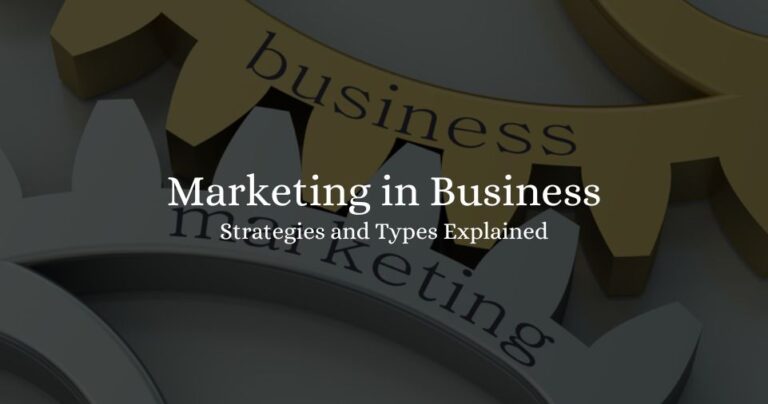Making Your Marketing Strategy Work Effective Ways 2023
Are you struggling to see results from your marketing efforts? Do you find yourself investing time and resources into marketing activities without achieving the desired outcomes? If so, you’re not alone. Many businesses face challenges when it comes to developing and executing an effective marketing strategy that delivers tangible results. But fear not, because in this article, we will delve into the common problems businesses encounter with their marketing strategies and provide you with a solution that will help you overcome these hurdles.
We understand the importance of a well-crafted marketing strategy that aligns with your business goals. We recognize the frustration that arises when your marketing efforts fall short, and we are here to help you turn the tide. In this blog post, we promise to guide you through the process of optimizing your marketing strategy to achieve the results you desire.
In the upcoming sections, we will provide you with a comprehensive overview of our solution. We will break down the key elements of a successful marketing strategy and show you how to integrate them effectively into your business. By the end of this article, you’ll have a clear understanding of the steps you need to take to make your marketing strategy work.
But before we dive into the solution, let’s address the pain point. As a business owner or marketer, you invest valuable time, effort, and resources into your marketing activities. It can be disheartening to see little to no return on your investment. You may feel frustrated, overwhelmed, or even skeptical about the effectiveness of marketing strategies altogether. Rest assured, we’ve been there too, and we understand your concerns.
Now, let’s talk about the solution we are going to provide. Our approach to making your marketing strategy work encompasses various strategies, techniques, and best practices that have proven successful for businesses across different industries. We will explore topics such as target audience identification, effective messaging, customer journey mapping, and data-driven decision-making. By implementing these strategies, you’ll be able to refine your marketing efforts and achieve the desired outcomes.
Throughout this article, we will provide you with real-world examples, practical tips, and analogies to help you grasp the concepts and apply them to your own marketing strategy. We want to ensure that you not only understand the theory behind an effective marketing strategy but also have the tools and knowledge to put it into action.
The Importance of a Well-Crafted Marketing Strategy
Understanding the Role of Marketing Strategy
A well-crafted marketing strategy serves as the foundation for your business’s overall marketing efforts. It provides a roadmap that guides your actions, aligns your marketing goals with your business objectives, and ensures that you make the most of your resources. Without a clear and effective marketing strategy in place, your marketing activities can become scattered, inefficient, and fail to deliver the desired results.
Think of your marketing strategy as a compass that keeps you on track. It helps you define your target audience, identify the most effective channels to reach them, craft compelling messages, and measure the success of your campaigns. By having a strategic approach to marketing, you can make informed decisions, optimize your efforts, and maximize your return on investment.
Key Benefits of an Effective Marketing Strategy
Implementing a well-crafted marketing strategy brings several key benefits to your business. Firstly, it helps you create a strong brand presence and build awareness among your target audience. A clear and consistent brand message, coupled with strategic marketing initiatives, establishes your business as a trusted authority in your industry.
Secondly, a well-defined marketing strategy enables you to attract and engage your ideal customers. By understanding their needs, pain points, and motivations, you can tailor your messaging and offerings to resonate with them. This targeted approach not only drives higher conversion rates but also fosters long-term customer loyalty and advocacy.
Additionally, a marketing strategy allows you to make data-driven decisions. By monitoring and analyzing the performance of your campaigns, you can identify what works and what doesn’t. This valuable insight helps you optimize your marketing efforts, allocate your resources effectively, and continuously improve your strategies.
Common Challenges Faced by Businesses
Developing and implementing an effective marketing strategy is not without its challenges. Many businesses encounter common hurdles that hinder their marketing success. One of the main challenges is understanding their target audience fully. Without a clear understanding of who their ideal customers are, businesses struggle to create messages that resonate and choose the right marketing channels to reach them.
Another challenge is crafting an effective message that cuts through the noise and grabs the attention of their target audience. With the ever-increasing amount of information available to consumers, it’s crucial to develop a unique value proposition that differentiates your business and communicates the benefits of your products or services clearly
Furthermore, businesses often face the dilemma of choosing the right marketing channels. With numerous digital and traditional channels available, it can be overwhelming to determine which ones will yield the best results for their specific industry and target audience.
Overcoming these challenges requires a strategic and systematic approach to marketing strategy. In the following sections, we will delve into the key steps to overcome these hurdles and ensure that your marketing strategy works effectively for your business.
Identifying Your Target Audience

Defining Your Target Audience
To create an impactful marketing strategy, you must have a deep understanding of your target audience. Your target audience consists of the individuals or businesses who are most likely to be interested in your products or services. By defining your target audience, you can tailor your marketing efforts to resonate with their specific needs, preferences, and pain points.
Start by conducting thorough market research to gather insights about your target audience. This research should encompass demographic information, such as age, gender, location, and income level, as well as psychographic data, such as interests, values, and purchasing behavior. The more detailed and accurate your understanding of your target audience is, the better you can tailor your marketing messages and choose the most effective channels to reach them.
Creating Buyer Personas
Once you have gathered the necessary data, it’s time to create buyer personas. Buyer personas are fictional representations of your ideal customers, based on real data and insights. They help you humanize your target audience and gain a deeper understanding of their motivations, challenges, and goals.
When creating buyer personas, consider factors such as job titles, pain points, preferred communication channels, and buying behaviors. Give each persona a name, visualize their characteristics, and empathize with their needs. This exercise will enable you to align your marketing messages, content, and campaigns with the specific needs and preferences of each persona.
Crafting an effective marketing strategy starts with a solid understanding of your target audience. By defining your target audience and creating buyer personas, you can lay the groundwork for targeted and impactful marketing efforts.
Crafting an Effective Message
Developing a Unique Value Proposition
In a crowded marketplace, it’s crucial to develop a unique value proposition (UVP) that sets your business apart from the competition. Your UVP is a concise statement that communicates the unique benefits and value your products or services offer to your target audience. It answers the question, “Why should customers choose you over your competitors?”
When developing your UVP, consider the key pain points and challenges your target audience faces and how your business can solve them. Highlight the specific features, qualities, or benefits that make your offerings stand out. Your UVP should be clear, compelling, and memorable, leaving a lasting impression on your target audience.
Creating Compelling and Targeted Messaging
Once you have defined your UVP, it’s time to craft compelling and targeted messaging that resonates with your audience. Your messaging should reflect your UVP and communicate the unique benefits and solutions your products or services provide. It should address the specific pain points, desires, or aspirations of your target audience.
To create effective messaging, consider the language, tone, and style that will resonate with your audience. Use language that speaks directly to their needs and emotions, and avoid jargon or technical terms that may confuse or alienate them. Tailor your messaging to different stages of the customer journey, from raising awareness to driving action, to ensure relevance and effectiveness.
Tailoring Your Message to Different Channels
In today’s multi-channel marketing landscape, it’s essential to tailor your message to the specific channels you use to reach your audience. Each channel has its own unique characteristics and audience behaviors, and what works well on one platform may not resonate on another.
Take the time to understand the nuances of each channel you use, whether it’s social media, email marketing, content marketing, or traditional advertising. Adapt your messaging to suit the format, limitations, and expectations of each channel. This personalized approach ensures that your message reaches your audience in the most impactful and relevant way possible.
By developing a compelling value proposition, crafting targeted messaging, and tailoring your message to different channels, you can effectively communicate the unique benefits of your products or services to your target audience. These steps are essential in making your marketing strategy work for your business.
Implementing and Evaluating Your Strategy

Setting SMART Goals
As you embark on implementing your marketing strategy, it’s crucial to set SMART goals to guide your efforts. SMART stands for Specific, Measurable, Attainable, Relevant, and Time-bound. Setting SMART goals helps you define clear objectives, track progress, and measure success.
Ensure that your goals are specific and clearly defined, such as increasing website traffic by 20% within three months or generating 50 new leads per month. Make them measurable so that you can track your progress and determine whether you’re on the right path. Your goals should be attainable and realistic, taking into account your available resources and capabilities. They should also be relevant to your overall business objectives and aligned with your target audience’s needs. Lastly, set a timeframe for achieving your goals to create a sense of urgency and accountability.
Choosing the Right Marketing Channels
To effectively implement your marketing strategy, you need to choose the right marketing channels to reach your target audience. This decision should be based on a thorough understanding of your audience’s preferences, behavior, and where they are most likely to engage with your brand.
Consider the demographics of your target audience and their preferred communication channels. Are they active on social media platforms like Facebook, Instagram, or LinkedIn? Do they engage with email newsletters? Are they more likely to respond to direct mail or traditional advertising? By selecting the most relevant channels, you can focus your efforts on platforms that will yield the highest impact and engagement.
Monitoring and Measuring Success
Once you’ve implemented your marketing strategy, it’s crucial to monitor and measure its performance to ensure its effectiveness. This involves tracking relevant metrics and key performance indicators (KPIs) that align with your goals.
Leverage analytics tools to gather data on website traffic, conversion rates, email open and click-through rates, social media engagement, and other relevant metrics. Analyze the data regularly to identify trends, patterns, and areas for improvement. Adjust your strategy based on the insights gained from the data, and continue to refine your approach to maximize results.
By setting SMART goals, choosing the right marketing channels, and continuously monitoring and measuring your strategy’s success, you can ensure that your marketing efforts align with your objectives and drive meaningful results for your business.
Stay tuned for the next sections of this blog post, where we will explore additional crucial elements of a successful marketing strategy. We’ll delve into topics such as customer journey mapping, data-driven decision-making, and the importance of monitoring and measuring your marketing efforts. Let’s continue on the path to making your marketing strategy work for your business.
Also Read: Marketing in Business: Strategies and Types Explained 2023
Conclusion
In conclusion, a well-crafted marketing strategy is a fundamental component of achieving success in today’s competitive business landscape. Throughout this article, we have explored the importance of understanding the role of marketing strategy, identifying your target audience, crafting an effective message, and implementing and evaluating your strategy. By following these steps, you can create a roadmap that aligns your marketing efforts with your business objectives, resonates with your target audience, and drives meaningful results.
Remember, the benefits of an effective marketing strategy are manifold. It helps you build brand awareness, attract and engage your ideal customers, and make data-driven decisions to continuously optimize your marketing initiatives. While challenges may arise along the way, such as understanding your target audience fully or choosing the right marketing channels, addressing them strategically will lead to better outcomes.
Now, it’s time to take action. Implement the strategies and insights shared in this article into your own marketing efforts. Define your target audience, develop a unique value proposition, create compelling messaging, choose the right channels, set SMART goals, and measure your success. By doing so, you’ll be well-equipped to make your marketing strategy work effectively for your business.
Remember, Rome wasn’t built in a day, and neither is a successful marketing strategy. It requires continuous evaluation, adaptation, and improvement. Embrace the journey, stay persistent, and don’t be afraid to experiment and try new approaches. Your efforts will pay off, and your business will reap the rewards of a well-executed marketing strategy.
FAQs
Q: How often should I revisit and adjust my marketing strategy?
A: It is recommended to regularly revisit and adjust your marketing strategy at least once a year or whenever significant changes occur in your business or the market. This ensures that your strategy remains relevant and aligned with your evolving goals and target audience.
Q: Can I have multiple target audiences for my marketing strategy?
A: While it’s possible to have multiple target audiences, it’s crucial to define them clearly and develop tailored approaches for each segment. Having a laser-focused strategy for specific audience segments allows for more effective communication and personalized messaging.
Q: How do I measure the success of my marketing strategy?
A: Measuring the success of your marketing strategy involves tracking and analyzing relevant metrics and KPIs. These can include website traffic, conversion rates, social media engagement, email open rates, and more. Set specific goals and regularly assess your progress against those goals to gauge the effectiveness of your strategy.
Q: What if my marketing strategy doesn’t deliver the expected results?
A: If your marketing strategy doesn’t deliver the expected results, it’s important not to get discouraged. Instead, evaluate your approach, analyze the data, and identify areas that need improvement. Experiment with different tactics, messages, or channels, and be open to making adjustments. Remember, marketing is an iterative process, and continuous learning and optimization are key to success.
Q: Can a small business benefit from a marketing strategy?
A: Absolutely! In fact, a well-crafted marketing strategy is especially crucial for small businesses. It helps them define their unique value proposition, target the right audience, and optimize their limited resources effectively. A strategic approach to marketing allows small businesses to compete effectively, build brand awareness, and achieve sustainable growth.






